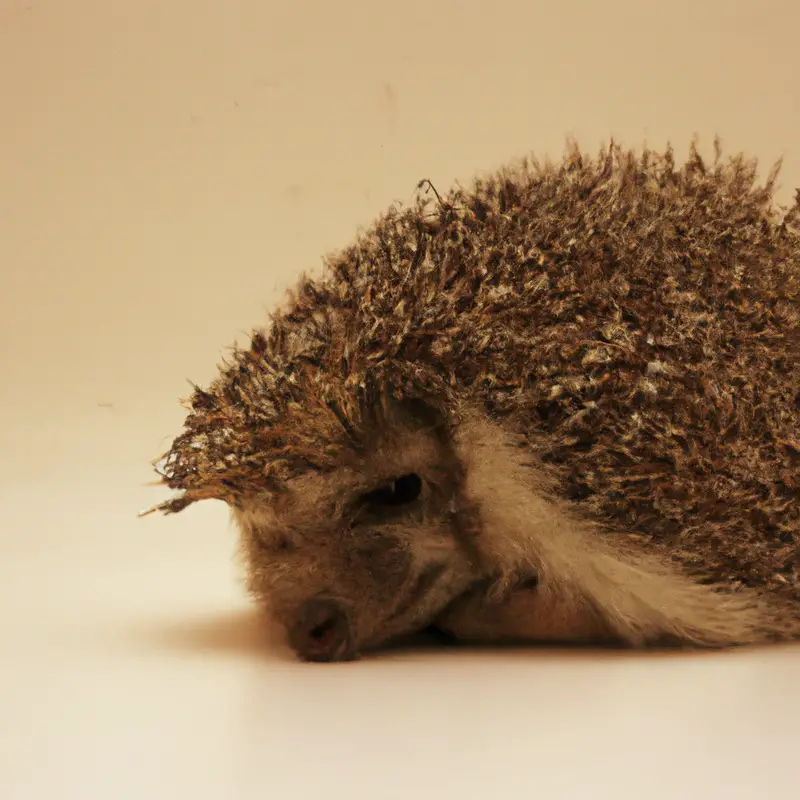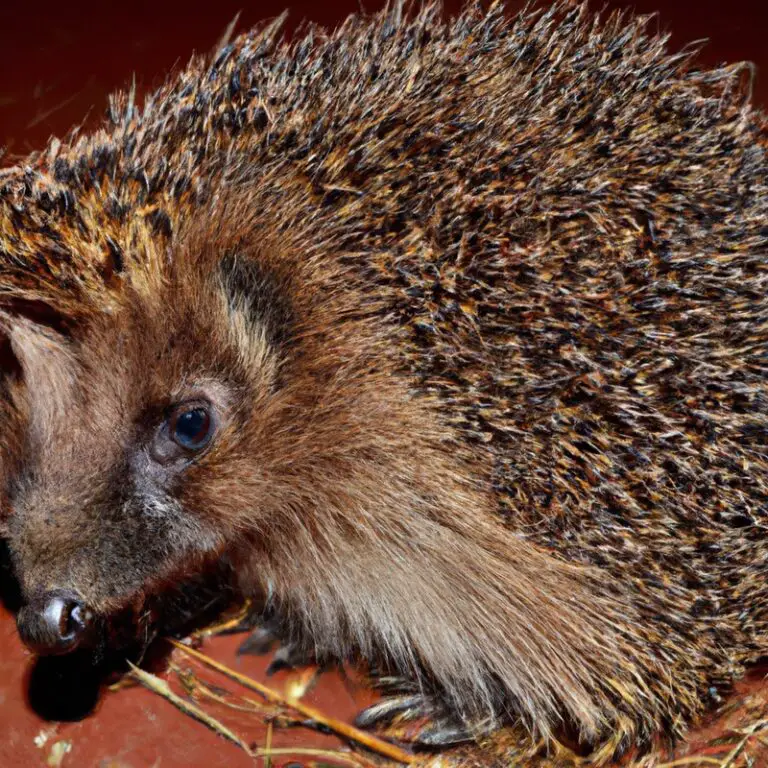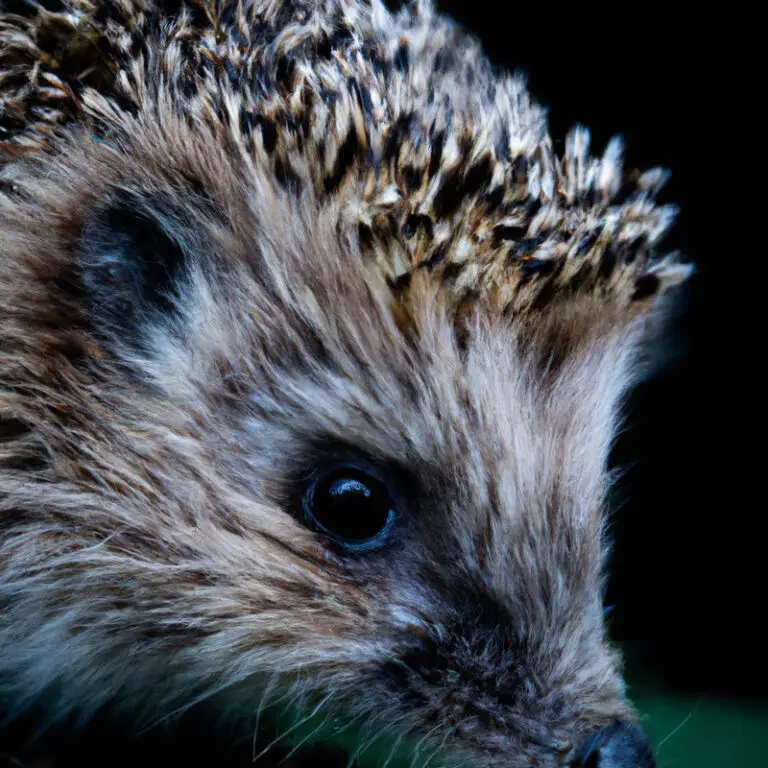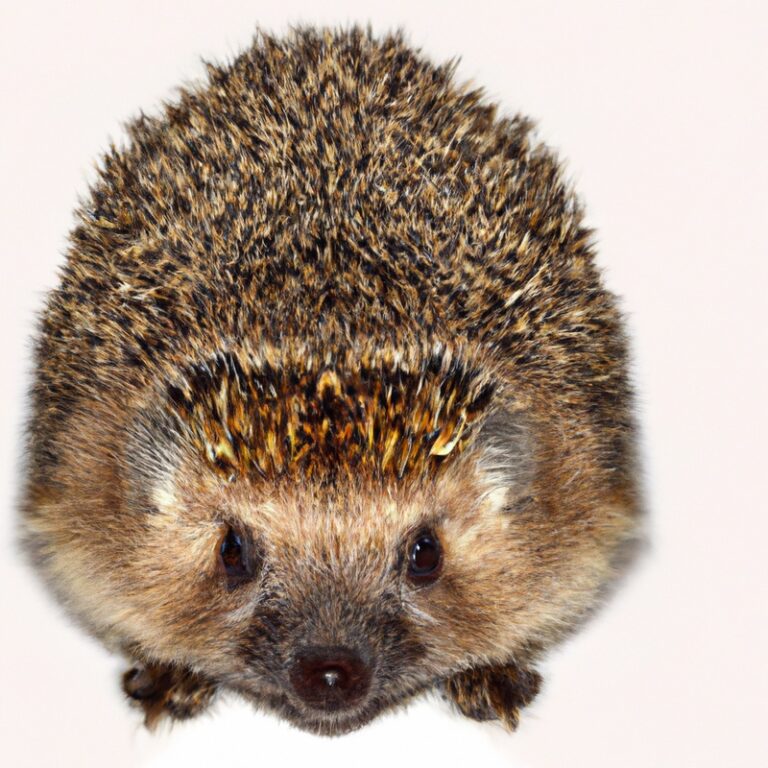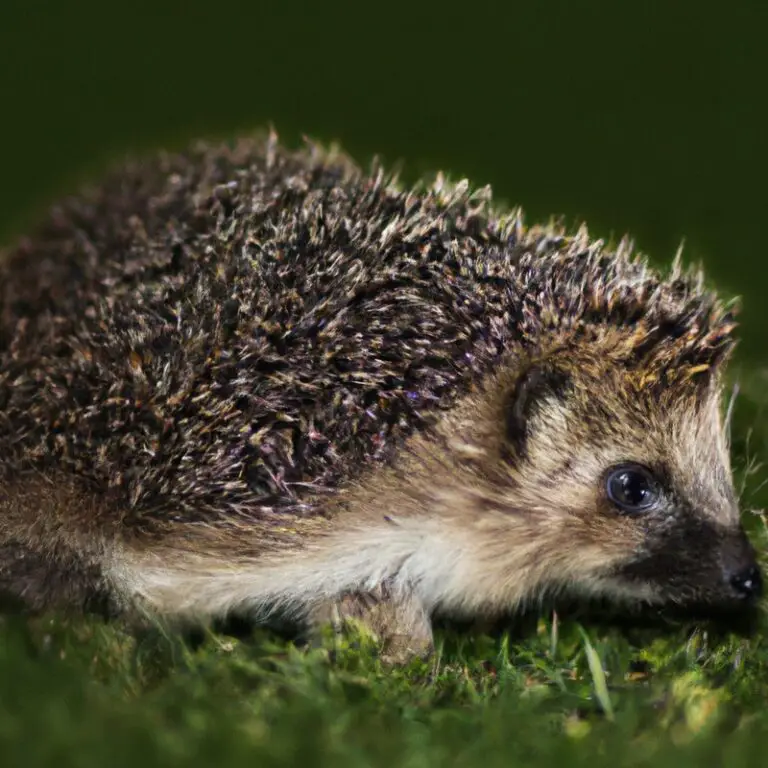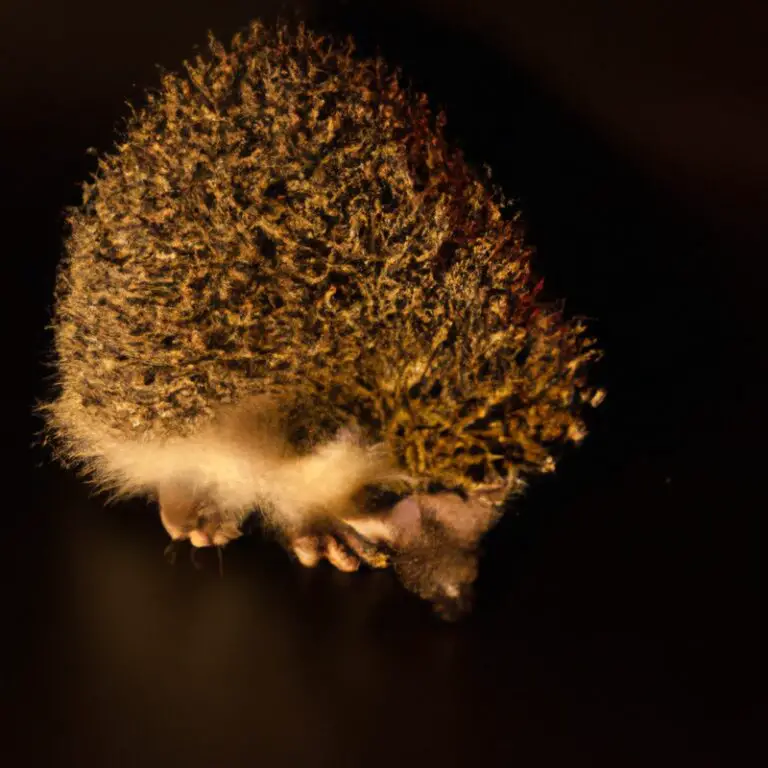How Do Hedgehogs Adapt To Changing Environments?
Key Takeaways:
- Hedgehogs are highly adaptable creatures that can modify their behavior and physiology to survive in changing environments.
- These animals can adjust their diet and hibernation patterns to cope with fluctuations in food availability and temperature.
- Hedgehogs have the ability to alter their habitat selection and activity patterns to minimize exposure to predators and maximize resource utilization.
- Their evolutionary adaptations, such as quills and nocturnal behavior, further enable hedgehogs to thrive in a variety of environments.
Have you ever wondered how hedgehogs manage to thrive in various environments, despite the challenges they face?
These adorable little creatures have an incredible ability to adapt and survive in changing habitats.
In this article, we’ll delve into the world of hedgehogs and explore their physical, behavioral, and reproductive adaptations that allow them to conquer different environments.
We’ll also examine the impact of human-induced changes on hedgehogs and how conservation efforts are helping these remarkable animals adapt and flourish.
So, let’s uncover the secrets of hedgehog adaptability and discover what makes them such resilient creatures in the face of changing environments.
| Adaptation | Description |
| Thermoregulation | Hedgehogs have spines that provide insulation, helping them regulate their body temperature in different environments. |
| Hibernation | In colder environments, hedgehogs enter a state of hibernation to conserve energy and survive harsh conditions. |
| Nocturnal behavior | Hedgehogs are primarily active at night, allowing them to avoid extreme temperatures during the day. |
| Camouflage | They can change their spines’ color to blend with their surroundings, providing camouflage and protection from predators. |
| Dietary flexibility | Hedgehogs have a diverse diet, including insects, fruits, and small vertebrates, allowing them to adapt to different food availability. |
Understanding Hedgehogs and their Adaptability
Hedgehogs are fascinating creatures with a unique ability to adapt to changing environments.
What are hedgehogs?
Hedgehogs are small, spiky mammals that belong to the Erinaceinae family.
They have a round body covered in sharp spines, which serve as a natural defense against predators.
Hedgehogs are known for their unique ability to curl up into a tight ball when threatened.
They have a good sense of smell and hearing, but their eyesight is not as strong.
Hedgehogs are nocturnal creatures, meaning they are most active at night.
They have a varied diet consisting of insects, small vertebrates, fruits, and plants.
Hedgehogs are found in various habitats, including forests, grasslands, and even urban areas.
The natural habitat of hedgehogs
Hedgehogs are found in a range of natural habitats, including forests, meadows, and grasslands.
They prefer areas with dense vegetation and plenty of hiding spots, like bushes and undergrowth.
Hedgehogs are nocturnal creatures, meaning they are most active at night.
They rely on their keen sense of hearing and smell to navigate their surroundings and find food, which consists mainly of insects, snails, and other small invertebrates.
Hedgehogs also need access to fresh water sources for drinking.
They are adaptable animals and can survive in various environments, as long as they have enough shelter and food supply.
Factors leading to habitat changes
Habitat changes occur due to various factors, including natural events like climate change, wildfires, and erosion.
Human activities like urbanization, deforestation, and pollution also play a significant role in altering habitats.
These activities lead to the destruction of natural habitats and loss of biodiversity.
Additionally, invasive species can disrupt ecosystems and drive out native species, further changing habitats.
It is crucial to understand and address these factors to ensure the preservation and conservation of habitats and the species that depend on them.
Physical Adaptations of Hedgehogs
Hedgehogs have developed quills as a form of protection.
Hedgehogs are nocturnal animals with well-developed senses and hunting abilities.
Quills as a form of protection
Quills are a unique and effective form of protection for hedgehogs. These sharp, hollow spines cover their bodies, acting as a deterrent for potential predators.
When threatened, hedgehogs will curl up into a ball, exposing their quills and creating a formidable barrier.
The quills can puncture the skin of predators, causing pain and discouraging further attacks. This adaptation is vital for hedgehogs’ survival and allows them to thrive in various environments.

Nocturnal behavior and hunting abilities
Nocturnal behavior and hunting abilities are key adaptations of hedgehogs. Hedgehogs are primarily active at night, using their excellent night vision and sense of smell to navigate their surroundings.
They rely on their hunting abilities to survive, feeding on insects, small animals, and even eggs.
Their sharp quills protect them from predators while they hunt, allowing them to roll into a tight ball for defense. These behaviors help hedgehogs thrive and find food in their ever-changing environments.
Well-developed senses
Hedgehogs have well-developed senses that help them navigate and survive in their environment.
Their sense of hearing is highly acute, allowing them to detect even subtle sounds around them.
This helps them detect potential threats or sources of food.
Hedgehogs also have a keen sense of smell, which they use to locate food and find their way around.
Additionally, their sense of touch is incredibly sensitive, allowing them to identify objects and navigate through their surroundings, even in the dark.
These well-developed senses are crucial for hedgehogs to adapt and thrive in changing environments.
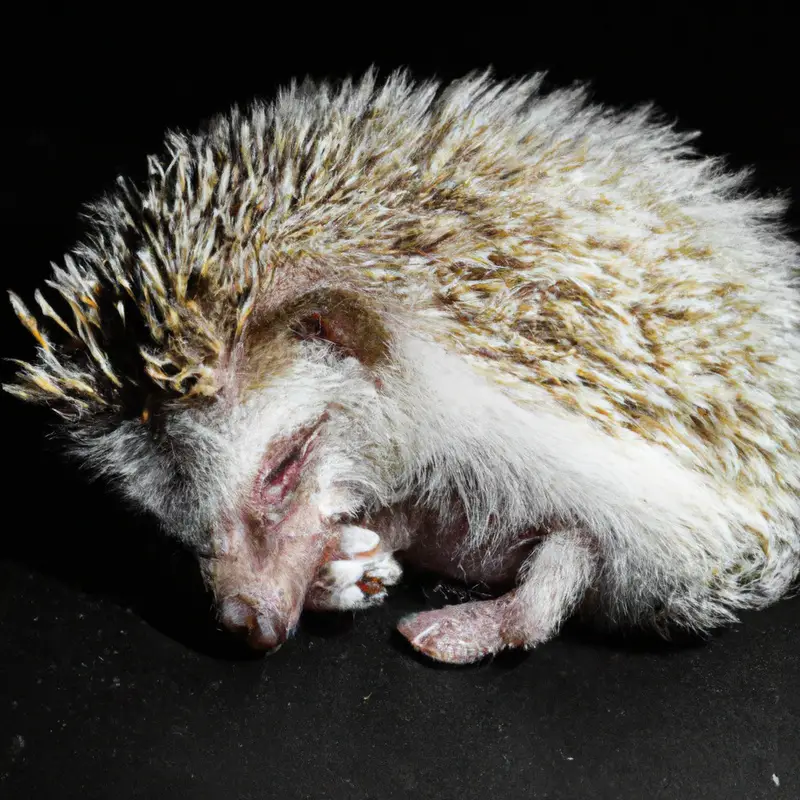
Adaptation to varying temperatures
Adaptation to varying temperatures is an important survival skill for hedgehogs.
These small creatures have developed several ways to regulate their body temperature.
First, they have a dense coat of spines that helps to insulate them from cold temperatures.
Second, during warmer weather, hedgehogs will seek out shady areas or burrows to stay cool.
In extremely high temperatures, they may also enter a state of torpor, similar to hibernation, to conserve energy.
Overall, hedgehogs have impressive temperature adaptation abilities that allow them to thrive in different environments.
Behavioral Adaptations of Hedgehogs
Hedgehogs have developed several behavioral adaptations to survive in changing environments. These include hibernation, dietary flexibility, finding alternative shelter, and social behavior.
Hibernation as a survival strategy
Hibernation is a survival strategy used by many animals, including hedgehogs.
During hibernation, hedgehogs enter a state of deep sleep where their body temperature, heart rate, and metabolism decrease significantly.
This allows them to conserve energy and survive in harsh conditions when food is scarce.
Hibernation also helps hedgehogs avoid predators and stay safe until more favorable conditions return.
By slowing down their bodily functions, hedgehogs can endure long periods of cold weather and emerge in the spring when food sources become abundant again.
Dietary flexibility
Dietary flexibility is a key adaptation for hedgehogs. They have the ability to incorporate a wide range of food sources into their diet.
Hedgehogs are primarily insectivores and their diet mainly consists of insects, such as beetles, worms, and snails.
However, they are also known to eat fruits, vegetables, and even small mammals if necessary. This flexibility allows them to survive and thrive in changing environments where their preferred food sources may not always be available.
Hedgehogs’ ability to adapt their diet is crucial for their survival.
Ability to find alternative shelter
Hedgehogs have the ability to find alternative shelter in changing environments. They are capable of adapting to different situations and finding suitable places to hide and protect themselves.
They may seek refuge in dense vegetation, under bushes or trees, or even in man-made structures such as sheds or piles of wood.
Hedgehogs are resourceful and can make use of various hiding spots to ensure their safety and survival.
Social behavior and communication
Social behavior and communication play a vital role in the lives of hedgehogs.
These adorable creatures are solitary by nature, but they do engage in certain social activities.
Hedgehogs communicate primarily through various vocalizations.
They make a range of sounds, from soft squeaks to loud snuffles, to express their emotions and intentions.
They also rely on body language, such as raising their quills or curling into a defensive ball, to communicate with other animals.
In addition, scent marking is another important method of communication for hedgehogs.
They use special scent glands to leave behind markings that convey information about their territory and reproductive status to other hedgehogs in the area.
Reproductive Adaptations of Hedgehogs
Hedgehogs have specific reproductive adaptations to cope with changing environments.
These adaptations include seasonal breeding patterns, adjustments to the availability of food and resources, and nest building and maternal instincts.
Seasonal breeding patterns
Seasonal breeding patterns are an important adaptation of hedgehogs. They mate and reproduce during specific times of the year, usually in spring or summer.
This strategy allows them to take advantage of optimal environmental conditions and ensures that their offspring have the best chance of survival.
By synchronizing their reproductive cycles with seasonal changes, hedgehogs can maximize their chances of finding mates and providing their offspring with sufficient resources and shelter. This adaptive behavior helps hedgehog populations thrive in changing environments.
Adjustments to changing availability of food and resources
Hedgehogs have remarkable adaptations to cope with changes in food and resource availability. Firstly, they possess a flexible diet, allowing them to adjust their food preferences based on what is available.
Secondly, hedgehogs have the ability to store fat reserves during periods of abundance, which they can rely on when food is scarce.
Additionally, they can enter a state of hibernation during winter months when food is scarce, conserving energy and resources. Lastly, hedgehogs have the ability to migrate to better feeding grounds if their current habitat no longer provides enough resources.
These adaptations allow hedgehogs to navigate changing environments and ensure their survival.
Nest building and maternal instincts
Nest building and maternal instincts are key adaptations of hedgehogs. Female hedgehogs have strong maternal instincts, meticulously building nests to protect their young.
They gather materials like leaves, grass, and twigs to create a safe and cozy shelter.
The nest provides insulation, camouflage, and protection from predators. The maternal instincts of hedgehogs ensure the survival of their offspring in their ever-changing environments.
Response to Human-Induced Environmental Changes
Hedgehogs have demonstrated their ability to respond and adapt to environmental changes caused by human activities.
As human-induced environmental changes occur, hedgehogs show a remarkable capacity to adjust and thrive.
Urbanization and hedgehog populations
Urbanization poses significant challenges to hedgehog populations.
As urban areas expand, hedgehogs struggle to find suitable habitats and face increased risks like road traffic and loss of foraging areas.
The loss of green spaces and fragmentation of habitats further exacerbate the situation.
However, there are steps that can be taken to support hedgehog populations, such as creating hedgehog-friendly gardens, providing safe passages under fences, and avoiding the use of pesticides.
These efforts can help mitigate the negative impacts of urbanization on hedgehogs and ensure their survival in changing environments.
Impact of climate change on hedgehog habitats
Climate change has a significant impact on hedgehog habitats. Rising temperatures and changes in precipitation patterns can alter vegetation, reducing food sources for hedgehogs.
This can lead to a decline in their population.
Additionally, extreme weather events like heatwaves and flooding can destroy hedgehog nests and disrupt their breeding cycles. It’s crucial for us to address climate change and protect hedgehog habitats to ensure their survival.
Conservation efforts and increasing hedgehog adaptability
Conservation efforts are crucial for increasing hedgehog adaptability in changing environments. The first step is creating suitable habitats by providing food, water, and shelter.
This can be done by planting native plants, creating log piles, and avoiding the use of pesticides.
Second, minimizing human interference by leaving hedgehogs undisturbed during hibernation and avoiding unnecessary habitat destruction is important. Finally, raising awareness among communities about the importance of hedgehogs and their conservation is key to ensuring their long-term survival.
Frequently Asked Questions about Hedgehogs and Adaptation
Can hedgehogs survive in different climates?
Hedgehogs are adaptable creatures that have the ability to survive in different climates.
They have thick fur that helps to regulate their body temperature in colder environments, and they are able to hibernate during harsh winters.
In hotter climates, hedgehogs dig burrows to seek shelter from the heat and conserve moisture.
These burrows also protect them from predators.
Hedgehogs are known for their resilience and can adjust their behaviors and habits to suit the climate they are in.
Do hedgehogs migrate to find better habitats?
Hedgehogs do not typically migrate to find better habitats.
They are not known for long-distance movements or seasonal migrations like some other species.
Hedgehogs are more inclined to adapt to their current environment by using behaviors such as seeking shelter, hibernating during winter, or foraging for food.
They are well-adapted to a wide range of habitats, from woodlands to gardens, and can thrive as long as they have access to suitable food and shelter.
What can individuals do to support hedgehogs in changing environments?
To support hedgehogs in changing environments, there are a few simple actions individuals can take:
- Create a hedgehog-friendly garden by providing shelter, such as log piles or hedgehog houses, and leaving areas of the garden wild for foraging.
- Ensure hedgehogs have access to fresh water by leaving out a shallow dish or a water source that won’t drown them.
- Avoid using pesticides or slug pellets in your garden, as they can be harmful to hedgehogs and their food sources.
- Check before lighting bonfires or mowing the lawn, as hedgehogs often seek refuge in these areas.
- Raise awareness by educating others about the importance of hedgehogs and their role in the ecosystem.
Final Verdict
Hedgehogs are remarkable creatures that have demonstrated remarkable adaptability to changing environments.
Their physical adaptations, such as quills and nocturnal hunting abilities, enable them to survive in various habitats.
They also possess behavioral adaptations, such as hibernation and dietary flexibility, which help them navigate changing food availability.
Hedgehogs have shown the ability to respond to human-induced environmental changes, such as urbanization and climate change, and conservation efforts are crucial in supporting their adaptability.
By understanding and protecting these fascinating creatures, we can ensure their continued survival in the face of evolving environments.

